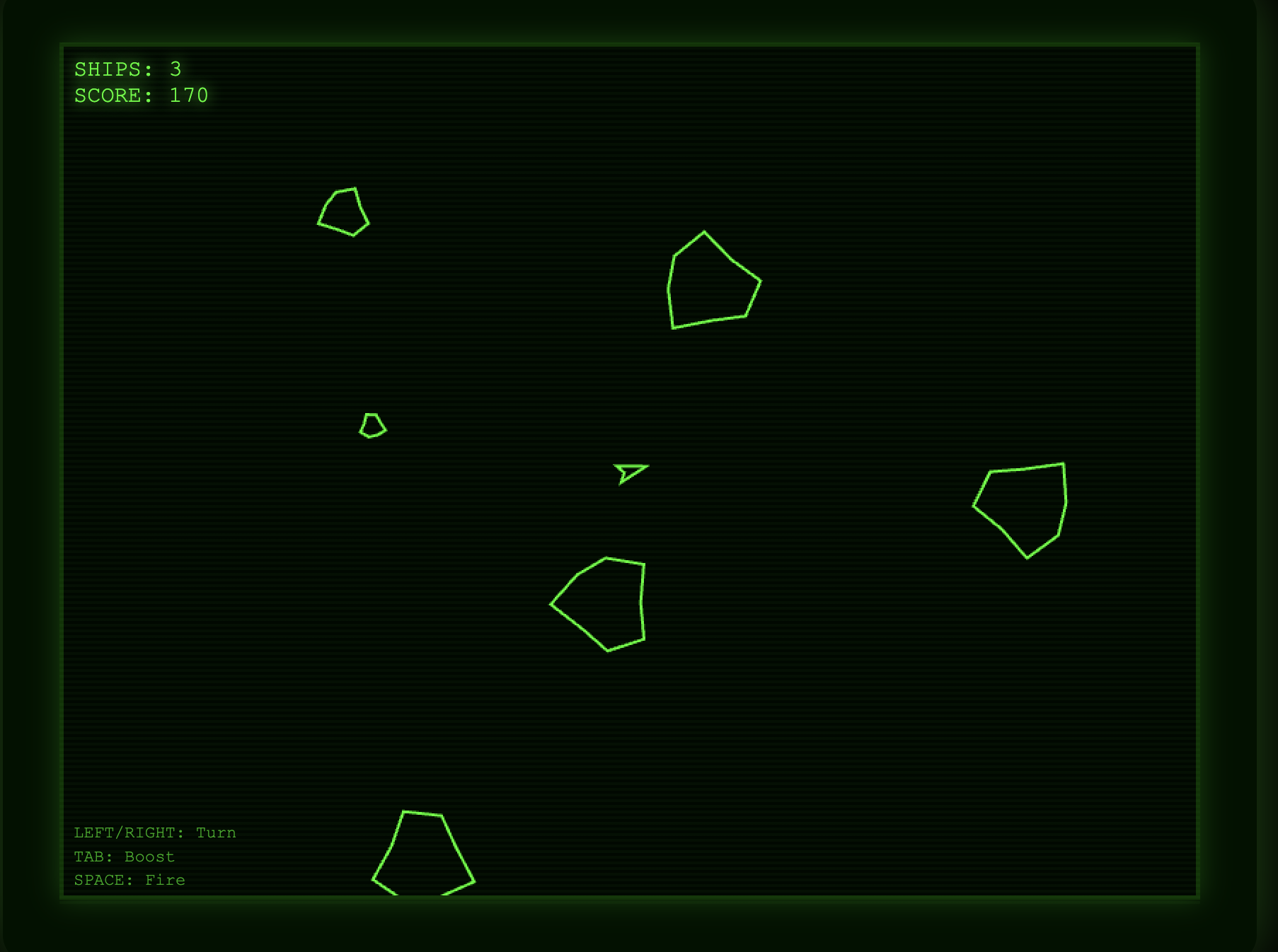What a blast! This AI built an Asteroids remake in five minutes and I still can't believe it

Six months ago, I was gushing about ChatGPT's ability to build a simple Tic-Tac-Go game (like Tic-Tac-Toe, but with a lot more squares) based on a handful of prompts. That, it turns out, was child's play. Now, I've used five prompts to create a remarkable facsimile of the classic Asteroids game I played as a teen in the 1980s.
It took Ed Logg two weeks to prototype Asteroids for Atari in 1979. It took Claude less than five minutes.
I was inspired after hearing about Claude's new Artifacts feature, which enabled one TechRadar writer to build a personalized Super Mario-like game in seconds. Super Mario, as a game about an adventurous journalist, is very cool, but I couldn't resist trying Artifacts with one of my all-time favorite arcade games.
Rarely has generative AI expectation met reality so perfectly.
Here's the first prompt. I've also boldfaced some words to show you the core requests..
"I want to build a game. It should look like it’s on a monochrome CRT screen.
You’re in a triangular space ship. Keyboard controls let you turn left or right and the space bar lets you shoot missiles (represented as a simple cluster of pixels). You’re shooting at asteroids flying all around you. If one hits the ship, it breaks apart. You have just three ships per turn.
Sign up for breaking news, reviews, opinion, top tech deals, and more.
When one of your missiles hits an asteroid, it breaks into smaller asteroids that you can shoot to completely destroy. Your ship can use boosters to fly forward in the direction you’re pointing. Use the tab key to activate the booster rocket. You win when all asteroids are destroyed."
Note that while I explained in some detail what I wanted, I said nothing about game physics, like how the asteroids would move and react to the missiles. I didn't define how the booster would make the ship move.
I defined the shape of the ship, but not the look of the asteroids. I explained how the asteroids would break up, but not what that animation might look like.
It was, at best, a game design outline. And yet this is what I got.

The only way that's possible is that Claude already knows what this game looks like from, for instance, the countless YouTube videos showing the original Asteroid Arcade gameplay.
I quickly realized, though, that I forgot to include scoring and levels. As I wrote this next prompt, I tried to use my memory of the countless hours I spent playing at a small grocery store arcade where I worked at as a teen:
"Amazing. Let’s update it with scoring. Every asteroid hit is worth 50. A destroyed asteroid is worth 100. If you destroy all asteroids, you open a new level that increases the number of asteroids by 10%. You also get an extra ship. Finally, if you score over 5000, you can put your three initials in a leader board that appears at the end of every game."
Leveling up
This time, Claude took a little longer, maybe an extra 30 seconds, to deliver a new game that I accessed via an updated URL. The scoring worked, and all was well until the game threw an error when it tried to launch the next level.
The last time I was trying to use AI to code a game and I hit an error, it was basically game over. This time, though, I had another idea. I copied the error and entered this prompt:
"Great, but the generation of a new level produced this error,
“Uncaught Error: Uncaught ReferenceError: nextLevel is not defined”
Can you debug and fix the code?"
Rarely has generative AI expectation met reality so perfectly.
I thought Claude might stall here, but after a minute or so, where sometimes I could see its work in what appeared to be HTML (Claude Artifacts will show you all its decisions after the work is done), a new game appeared. I copied the link, opened it in a browser window, and started playing.
Now I could beat the level and seamlessly move onto the next. When I cleared all the asteroids, I got, as I had directed, an extra ship. Claude, on its own, made it possible to keep collecting ships as I beat levels.
I shared the game with coworkers who suggested I make it more difficult. I agreed that the game felt a bit basic and repetitive. I added this prompt:

"Great! Let’s have each level increase the asteroid load by 25% and make the asteroids move 10% faster in each new level."
Obviously, I was guessing at how these adjustments would express themselves in the game, but Claude did not disappoint. Soon, I had a new multi-level game that did get somewhat more intense with each level. Even so, I was mostly just winning.
Then someone suggested I add another element, an attacking alien ship, which would mean you were dodging and shooting asteroids while also dodging and shooting at a wily attacker. Time for another prompt:
"After level 2 let’s add a small, fast alien ship that will chase and fire at us. It cannot be destroyed by the asteroids, but it can destroy us. We can also shoot it and destroy it for 500 points."

That, it turned out, was my last free prompt of the day with Claude, but it was worth it. As I played the new build and hit level 2, a tiny spaceship (that looked like a little, classic 1950s idea of a flying saucer) appeared and started chasing me. Claude decided on its own to break the monochromatic rule and made the alien ship's cannons shoot red missiles. The game was now much harder.
It's clear to me that we'll soon have Claude-made and other AI-built games of far greater complexity appearing online and elsewhere. The authors? AI. The credit, though, should go to the countless human developers who built real games over the past five decades, and whose work is now being hoovered up for training these systems and remixed on the fly with nothing but a prompt.
I wonder what Ed Logg would think of this.
You might also like

A 38-year industry veteran and award-winning journalist, Lance has covered technology since PCs were the size of suitcases and “on line” meant “waiting.” He’s a former Lifewire Editor-in-Chief, Mashable Editor-in-Chief, and, before that, Editor in Chief of PCMag.com and Senior Vice President of Content for Ziff Davis, Inc. He also wrote a popular, weekly tech column for Medium called The Upgrade.
Lance Ulanoff makes frequent appearances on national, international, and local news programs including Live with Kelly and Mark, the Today Show, Good Morning America, CNBC, CNN, and the BBC.
You must confirm your public display name before commenting
Please logout and then login again, you will then be prompted to enter your display name.